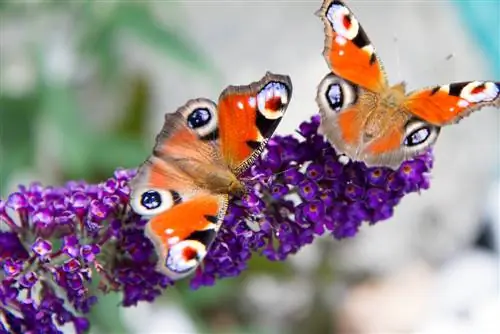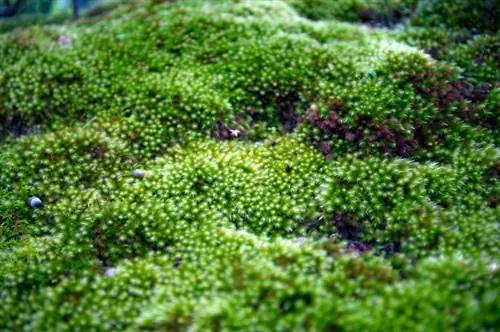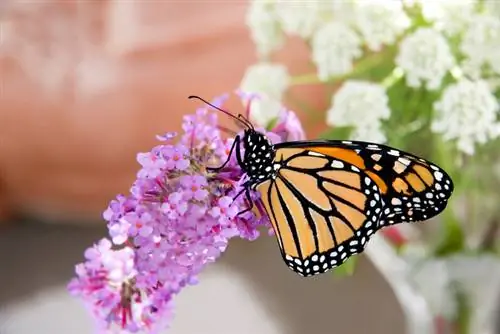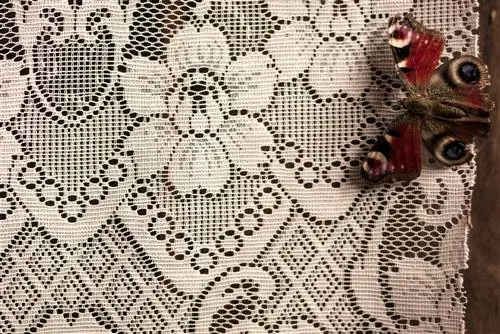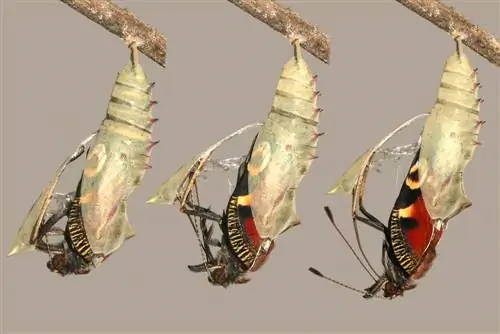- Author admin [email protected].
- Public 2023-12-16 16:46.
- Last modified 2025-01-23 11:22.
With tempting food plants, your garden will become a popular destination for butterflies. Crowds of colorful butterflies dance in the flower bed from spring to autumn, when the table is richly set for the caterpillars. These tips reveal how you can attract butterflies with the right traditional plants.

How can I attract butterflies to my garden?
To attract butterflies, you should plant native wild perennials and unfilled flowers, e.g. chartreuse, scabiosis or wild marjoram. Plant leaves are important as food for caterpillars, e.g. wild carrots, sweet grasses or bedstraws.
Attracting butterflies with traditional plants
Butterflies cover their energy needs with nectar and pollen. Uniform lawns with no flowers far and wide are anathema to butterflies. Why not remove a piece of the turf, sow the Veitshöchheim bee pasture and be surprised by the buzzing, buzzing and fluttering guests. With these flowering traditional plants you can transform your natural garden into a swarming butterfly paradise:
- Rule of thumb: Attract butterflies with native wild perennials and exotic plants with unfilled flowers
- Native plant selection: Chartreuse carnation (Dianthus carthusianorum), scabiosa (Scabiosa columbaria), wild marjoram (Origanum vulgare)
- Top butterfly willows: Buddleia (Buddleja davidii), phlox, zinnias (Zinnia)
A self-made herbal spiral with rosemary (Rosmarinus officinalis), sage (Salvia) and nasturtium (Tropaeolum) has an irresistible attraction for butterflies. Colorful butterflies cavort on the balcony, while oregano (Origanum) and chives (Allium schoenoprasum) keep each other in bloom on the herb staircase.
Butterfly magnet: caterpillar food plants
Butterflies populate the garden and balcony, even if the offspring are taken care of. Caterpillars have no interest in nectar or pollen. Plant leaves are at the top of their menu. The more varied the range of food plants, the more species of butterflies there are. The following table provides an overview:
| butterfly species | Caterpillar food plant | Botanical name |
|---|---|---|
| Swallowtail | Wild Carrot | Daucus carota |
| Oxeye and chessboard | sweet grasses | Poaceae |
| Little wine enthusiast | bed herbs | Galium |
| Medium wine hawkmoth | Fuchsia leaves | Fuchsia |
| Lemon butterfly | rotten tree | Frangula alnus |
| Tree White Butterfly | Hawthorn species | Crataegus |
A wild corner in the garden makes the hearts of butterfly caterpillars beat faster. Here the offspring of the admiral, maplefish, little fox, painted lady and peacock butterfly feast on nettles, dandelions and tansy.
A garden full of exotic plants, however, is a bitter disappointment for butterfly parents. More than 90 percent of the leaves of tropical flowers, perennials and trees are inedible for hungry caterpillars.
Tip
In the bee-friendly garden, butterflies, wild bees and bumblebees give each other a hand. This is achieved with natural planting of local wildflowers and the consistent avoidance of pesticides and artificial fertilizers. Main pillars in garden care are weeding by hand, organic fertilizing with compost and plant protection with home remedies.

